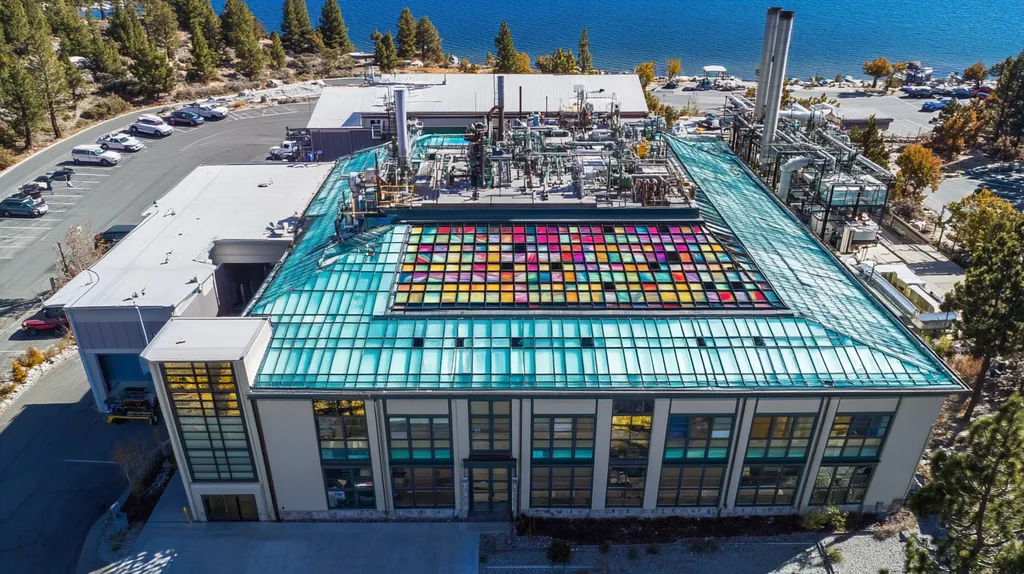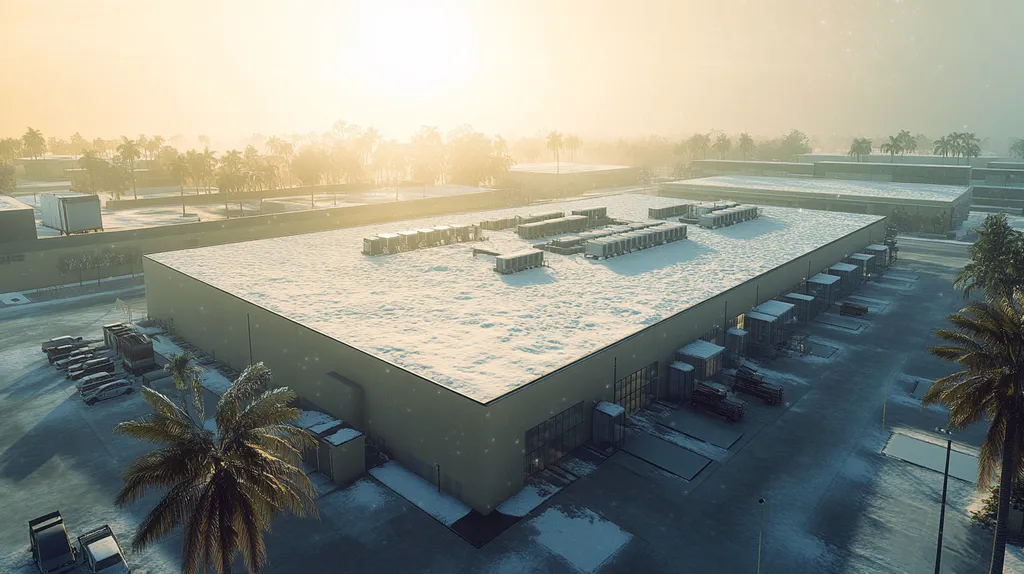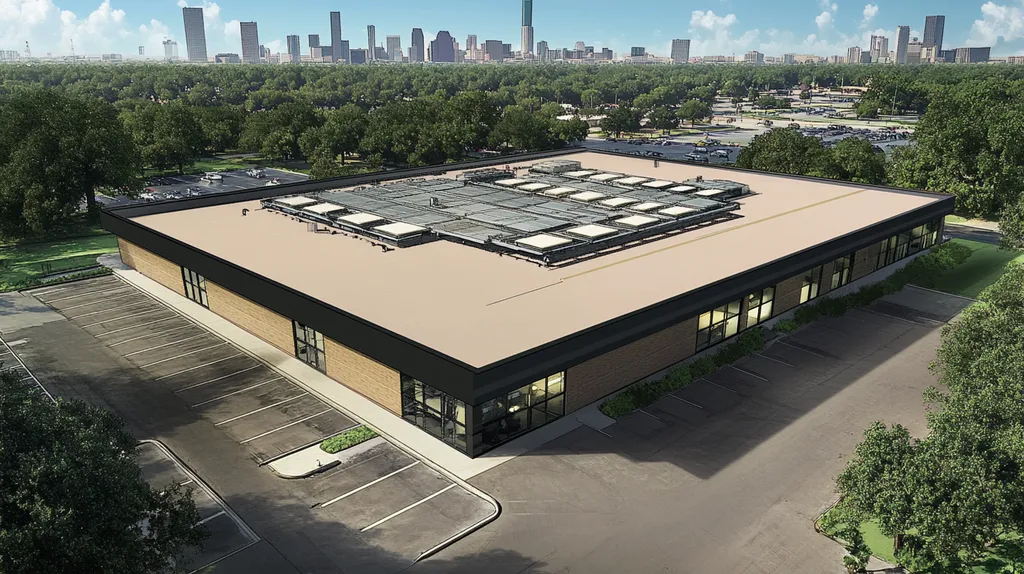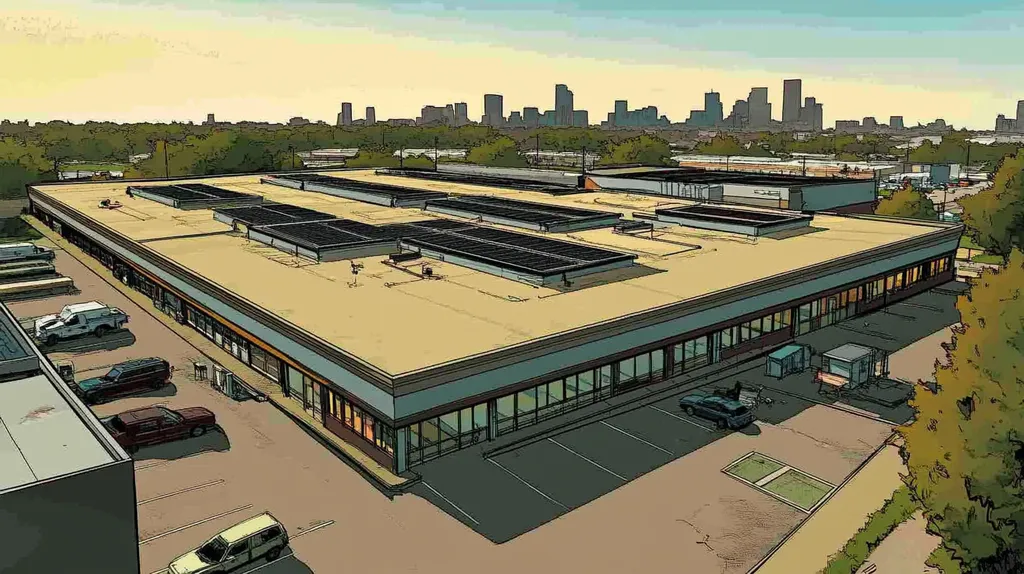Welcome to today’s Battle Royale featuring two roofing heavyweights: “Polyurethane Coatings” in the east corner versus “Polyurea Coatings” in the west!
Tonight’s showdown pits these contenders against each other across six punishing rounds designed to test every aspect of their performance for Commercial Roofing Contractor Certifications.
At stake? Millions in potential costs, decades of building protection, and the critical performance demands of modern commercial and industrial facilities.
Our professional judging panel will evaluate each round on technical merit, real-world performance, and value delivery. After all six rounds, we’ll declare our ultimate champion.
Ladies and gentlemen, facility managers and building owners… it’s time to rumble!
ROUND 1: INITIAL COSTS & INSTALLATION
The financial stakes in commercial roofing coating decisions have never been higher. Installation missteps or material selection errors can escalate project costs by 25-40% above initial budgets, directly impacting a facility’s bottom line. Understanding the critical differences between polyurethane and polyurea coatings – from material costs through installation requirements – can prevent costly oversights and ensure optimal return on investment.
Material Expenses
Material selection represents the foundation of any successful coating project. Polyurethane coatings typically range from $2.00 to $3.50 per square foot for materials alone, making them an attractive option for budget-conscious facility managers.
Polyurea coatings command premium pricing, usually $4.00 to $6.00 per square foot. This higher initial investment reflects advanced chemical properties and enhanced durability characteristics.
GAF Coatings’ certification programs highlight how proper material selection and certified installation can maximize coating performance and warranty coverage, regardless of material choice. (source: GAF Coatings)
ADVANTAGE: Polyurethane Coatings
Installation Complexity
Installation requirements significantly impact project success and overall costs. Polyurethane coatings demand strict environmental controls, including specific temperature and humidity ranges during application.
Polyurea coatings offer greater application flexibility, with rapid cure times even in challenging conditions. This adaptability reduces the risk of installation delays and complications.
While both materials require skilled application, polyurea’s forgiving nature and shorter cure times translate to fewer application variables and reduced risk of installation errors.
ADVANTAGE: Polyurea Coatings
Project Timeline
Project duration directly affects facility operations and bottom-line costs. Polyurethane installations typically require 24-48 hours between coats, with full cure times extending to 7-10 days.
Polyurea coatings dramatically reduce project timelines with cure times measured in minutes rather than days. This rapid curing allows for same-day completion of multiple layers and faster return to service.
The significant difference in cure times makes polyurea the clear choice for projects where minimizing facility disruption is crucial.
ADVANTAGE: Polyurea Coatings
ROUND 1 WINNER: Polyurea Coatings
ROUND 2: DURABILITY & LIFESPAN
In commercial roofing, durability and lifespan directly impact long-term facility costs and protection. Industry data shows that premature coating failures can increase lifetime maintenance expenses by 150-200% compared to properly specified systems. Understanding the performance characteristics of polyurethane and polyurea coatings is crucial for making informed decisions that protect both buildings and budgets.
Impact Resistance and Weather Protection
Polyurethane coatings offer excellent UV resistance and flexibility, maintaining their protective properties even with temperature fluctuations. Their molecular structure allows for expansion and contraction without compromising the coating’s integrity.
While durable, polyurethane coatings can be vulnerable to direct physical impact and may show wear in high-traffic areas. They perform well in moderate climates but may require more frequent maintenance in extreme conditions.
Polyurea coatings demonstrate superior impact resistance and maintain their protective properties even under extreme stress. Their rapid-cure chemistry creates an exceptionally tough membrane that resists punctures and abrasions.
The material’s enhanced molecular structure provides superior resistance to thermal shock, wind uplift, and mechanical damage. This translates to fewer maintenance requirements and better long-term protection.
ADVANTAGE: Polyurea Coatings
Chemical and Environmental Resistance
Polyurethane coatings provide good chemical resistance against common industrial pollutants and moderate exposure to acids or bases. They maintain their protective properties when exposed to typical rooftop contaminants.
However, prolonged exposure to standing water or harsh chemicals can accelerate degradation. Regular inspections are essential to monitor potential weak points and address issues before failure occurs.
Polyurea coatings excel in chemical resistance, showing minimal degradation even with extended exposure to aggressive substances. Their dense molecular structure creates an nearly impenetrable barrier against chemical attack.
These coatings maintain their protective properties even in extremely corrosive environments, making them ideal for industrial facilities or areas with high pollution levels.
ADVANTAGE: Polyurea Coatings
Service Life and Warranty Coverage
Polyurethane coatings typically offer a service life of 15-20 years with proper maintenance. Regular inspections and preventive care can help maximize their protective lifespan.
Standard warranty coverage for polyurethane systems often includes 10-15 year terms, reflecting manufacturer confidence in long-term performance. GAF Coatings offers comprehensive warranty options through their certified contractor programs, including their Emerald Pledge™ and Diamond Pledge™ guarantees. (source: GAF Coatings)
Polyurea coatings consistently achieve service lives of 20-25 years or more. Their superior physical properties and resistance to degradation result in extended performance with minimal maintenance requirements.
These systems often carry longer warranty terms, sometimes reaching 20-25 years, demonstrating manufacturer confidence in their exceptional durability.
ADVANTAGE: Polyurea Coatings
ROUND 2 WINNER: Polyurea Coatings
ROUND 3: PERFORMANCE FACTORS
Performance metrics in commercial roofing directly impact building protection and operational costs. Industry data shows that poor coating performance can increase annual maintenance expenses by 35-50% and reduce expected service life by up to 40%. Understanding how polyurethane and polyurea coatings perform under real-world conditions is crucial for making informed decisions that protect facilities and budgets.
Durability
Durability under sustained stress determines a coating’s ability to provide consistent protection. Polyurethane coatings demonstrate good elasticity and abrasion resistance, typically maintaining their protective properties for 15-20 years with proper maintenance.
These coatings can withstand normal foot traffic and moderate physical impacts, though they may show wear patterns in high-traffic zones. Temperature fluctuations can affect their performance, requiring careful monitoring in extreme climates.
Polyurea coatings excel in durability metrics, with superior tensile strength and tear resistance. Their advanced chemistry creates an exceptionally tough membrane that maintains flexibility while resisting punctures and physical damage.
This enhanced durability translates to better protection against mechanical stress and reduced vulnerability to damage from routine maintenance activities. The material’s structural integrity remains stable even under extreme temperature variations.
ADVANTAGE: Polyurea Coatings
Weather Resistance
Weather resistance capabilities directly affect long-term coating performance and protection levels. Polyurethane coatings provide reliable UV protection and moisture resistance under normal conditions, though extended exposure to standing water can compromise their effectiveness.
GAF Coatings’ certification programs emphasize proper installation techniques to maximize weather resistance and ensure comprehensive warranty coverage for certified contractors. (source: GAF Coatings)
Polyurea coatings demonstrate exceptional resistance to environmental stressors, including UV radiation, moisture penetration, and extreme temperature cycles. Their rapid-cure properties create a seamless membrane that maintains its protective characteristics even under harsh weather conditions.
This superior weather resistance results in better long-term protection and reduced risk of weather-related failures. The coating’s stability in diverse climates makes it particularly valuable for facilities in challenging environments.
ADVANTAGE: Polyurea Coatings
Maintenance Requirements
Maintenance needs significantly impact total ownership costs and facility operations. Polyurethane coatings require regular inspections and periodic maintenance to maintain optimal performance, typically needing attention every 3-5 years.
While these maintenance requirements are manageable, they necessitate consistent monitoring and prompt attention to prevent degradation of protective properties. Small issues can escalate quickly if not addressed.
Polyurea coatings minimize maintenance demands through their superior physical properties and resistance to degradation. Their dense molecular structure and excellent adhesion properties reduce the frequency of required inspections and repairs.
This reduced maintenance burden translates to lower long-term costs and fewer disruptions to facility operations. The coating’s resilience allows for extended periods between maintenance cycles.
ADVANTAGE: Polyurea Coatings
ROUND 3 WINNER: Polyurea Coatings
ROUND 4: MAINTENANCE REQUIREMENTS
Maintenance requirements for commercial roofing coatings directly impact building protection and operational budgets. Industry data shows that inadequate maintenance programs can reduce coating lifespans by up to 70% and increase emergency repair costs by 300%. Understanding the specific maintenance demands of polyurethane and polyurea coatings is essential for developing effective long-term asset management strategies.
Inspection Frequency and Complexity
Polyurethane coatings require comprehensive inspections at least quarterly to identify potential issues before they escalate. These inspections must evaluate coating adhesion, surface wear patterns, and early signs of degradation.
The inspection process demands careful attention to seams, penetrations, and high-traffic areas where coating failure typically begins. Even minor oversights during inspections can lead to significant repair needs.
Polyurea coatings generally require only bi-annual inspections due to their superior physical properties and resistance to degradation. Their molecular structure and enhanced durability reduce the complexity of inspection requirements.
The simplified inspection protocol focuses primarily on mechanical damage rather than coating degradation, streamlining the maintenance process and reducing associated costs.
ADVANTAGE: Polyurea Coatings
Repair Requirements
Polyurethane coating repairs often involve extensive surface preparation and careful environmental control. Repairs must be completed promptly to prevent moisture infiltration and coating delamination.
The repair process typically requires a 24-48 hour cure time, during which the repaired area must be protected from environmental exposure. This extended vulnerability period increases the risk of secondary damage.
Polyurea coating repairs benefit from the material’s rapid cure properties, allowing most repairs to be completed and returned to service within hours. The superior bonding characteristics of polyurea simplify the repair process and improve long-term durability.
The quick-curing nature of polyurea repairs significantly reduces facility disruption and eliminates the extended vulnerability period associated with polyurethane repairs.
ADVANTAGE: Polyurea Coatings
Preventive Maintenance Programs
Polyurethane coatings demand structured preventive maintenance programs to achieve their expected lifespan. Regular cleaning, coating rejuvenation, and precise documentation of maintenance activities are essential.
GAF Coatings’ certification programs provide detailed maintenance protocols and training for certified contractors, ensuring optimal coating performance through standardized preventive maintenance practices. (source: GAF Coatings)
Polyurea coatings require less intensive preventive maintenance due to their superior chemical and physical resistance. Basic cleaning and occasional touch-ups typically suffice to maintain optimal performance.
This reduced maintenance burden translates to lower long-term costs and simplified facility maintenance planning. The coating’s inherent durability minimizes the need for specialized maintenance procedures.
ADVANTAGE: Polyurea Coatings
ROUND 4 WINNER: Polyurea Coatings
ROUND 5: SUSTAINABILITY CREDENTIALS
Environmental responsibility in commercial roofing has become a critical business imperative. Studies show that non-sustainable roofing choices can increase energy costs by 30% and significantly impact a building’s carbon footprint. With mounting pressure from regulations and stakeholders, choosing the right sustainable coating solution directly affects both environmental compliance and operational costs.
Environmental Impact and Resource Use
Polyurethane coatings present challenges in environmental stewardship due to their solvent-based formulations. These coatings often contain high levels of volatile organic compounds (VOCs), requiring special handling and application procedures to minimize environmental impact.
Manufacturing traditional polyurethane coatings demands significant energy input, contributing to their overall carbon footprint. The production process also generates hazardous waste that requires careful disposal protocols.
Polyurea coatings demonstrate superior environmental credentials through their low-VOC formulations and reduced waste generation during manufacturing. Their rapid-cure technology minimizes energy consumption during application and reduces overall resource use.
The enhanced molecular structure of polyurea allows for thinner application thickness while maintaining protection, further reducing material consumption and environmental impact.
ADVANTAGE: Polyurea Coatings
Energy Efficiency and Building Performance
Polyurethane coatings provide moderate thermal resistance properties, helping reduce building energy consumption. However, their effectiveness can diminish over time, particularly in areas with extreme temperature variations.
These coatings require periodic reapplication to maintain their energy-efficient properties, increasing lifetime resource consumption and environmental impact.
Polyurea coatings excel in maintaining consistent thermal resistance properties throughout their service life. Their superior weathering characteristics ensure sustained energy efficiency without degradation.
The exceptional durability of polyurea coatings means fewer replacement cycles, reducing the overall environmental impact of maintenance and replacement operations.
ADVANTAGE: Polyurea Coatings
End-of-Life Management
Polyurethane coatings present significant challenges for responsible disposal at the end of their service life. Their chemical composition makes recycling difficult, often requiring specialized handling and disposal procedures.
The removal process for degraded polyurethane coatings can generate substantial waste, contributing to landfill burden and environmental impact.
Polyurea coatings offer improved end-of-life management options through their advanced chemical composition. Modern formulations allow for more efficient recycling processes and reduced environmental impact during removal.
These coatings can often be rejuvenated rather than replaced, significantly extending their service life and reducing waste generation.
ADVANTAGE: Polyurea Coatings
ROUND 5 WINNER: Polyurea Coatings
ROUND 6: SPECIALIZED APPLICATIONS
Specialized applications in commercial roofing present unique challenges that can make or break a facility’s protection. Industry data shows that mismatched coating applications in specialized environments lead to premature failures in 65% of cases, with replacement costs averaging 3-4 times the original installation. Understanding how polyurethane and polyurea coatings perform in demanding scenarios is crucial for protecting both assets and operations.
Chemical Storage and Processing Areas
Chemical exposure presents one of the most demanding tests for roofing coatings. In these environments, coating failure can lead to hazardous conditions and costly facility shutdowns.
Polyurethane coatings offer moderate chemical resistance but can degrade when exposed to concentrated acids, bases, or industrial solvents. Their molecular structure becomes compromised over time, potentially leading to coating failure and substrate damage.
Polyurea coatings demonstrate exceptional resistance to a broad spectrum of chemicals, maintaining their protective properties even under sustained exposure. Their dense molecular structure creates an impermeable barrier that resists chemical penetration and degradation.
ADVANTAGE: Polyurea Coatings
Extreme Temperature Environments
Temperature fluctuations and extreme conditions can severely impact coating performance. Facilities operating in challenging climates require coatings that maintain their protective properties across wide temperature ranges.
Polyurethane coatings perform adequately in moderate temperatures but become brittle in extreme cold and may soften excessively in high heat. These limitations can compromise their protective capabilities and accelerate degradation.
Polyurea coatings maintain their flexibility and adhesion from -40°F to 350°F. Their rapid cure chemistry creates a stable membrane that resists thermal shock and maintains protective properties even during extreme temperature cycles.
ADVANTAGE: Polyurea Coatings
High-Traffic and Impact Areas
Areas subject to frequent foot traffic, equipment movement, or impact stress require exceptional coating durability. Failing to match coating properties to these demands can result in premature wear and frequent repairs.
Polyurethane coatings provide acceptable wear resistance in light to moderate traffic conditions but can show significant degradation in high-impact zones. Their slower cure times also extend vulnerability during installation and repairs.
Polyurea coatings excel in high-stress environments, offering superior impact resistance and rapid return to service. Their exceptional tensile strength and tear resistance provide lasting protection even under intense mechanical stress.
ADVANTAGE: Polyurea Coatings
ROUND 6 WINNER: POLYUREA COATINGS
AND THE WINNER IS…
After six grueling rounds of technical competition, we have a decisive victory! In a stunning display of superior performance across multiple categories, POLYUREA COATINGS emerges as our undisputed champion with a clean sweep of all six rounds!
The winner dominated with exceptional durability, rapid installation capabilities, and superior chemical resistance. Its championship-caliber performance in specialized applications and sustainability metrics proved particularly impressive, showcasing why it’s becoming the coating of choice for demanding commercial environments.
Yet don’t count polyurethane coatings out completely! This veteran contender still delivers solid performance for budget-conscious projects in moderate climates where extended cure times aren’t a critical factor. Its lower initial cost makes it a worthy challenger in specific situations.
IMPORTANT NOTICE: While this analysis reflects general industry trends, every building presents unique challenges. Local climate conditions, substrate characteristics, and specific facility requirements can significantly impact coating performance. Property owners should partner with certified contractors and qualified professionals to evaluate their specific situation before making final selections.
Ladies and gentlemen, in the high-stakes arena of commercial roofing, remember: The true champion isn’t just the coating with the most impressive stats – it’s the one that best protects YOUR facility for the long haul. Choose wisely, and may your roof stand strong!
FREQUENTLY ASKED QUESTIONS
Q. What are the initial costs for a commercial roof coating?
A. Material selection for commercial roof coatings can vary significantly. Polyurethane coatings generally cost between $2.00 to $3.50 per square foot, making them a budget-friendly choice. Conversely, polyurea coatings typically cost $4.00 to $6.00 per square foot, reflecting their advanced properties and performance. Understanding these cost structures is essential to avoid budget overruns during installation.
Q. How long do industrial roof coatings last?
A. The lifespan of industrial roof coatings largely depends on the material used. Polyurethane coatings generally last 15-20 years with proper maintenance, while polyurea coatings often exceed 20-25 years. Selecting the right coating material helps ensure longevity and minimizes long-term maintenance costs.
Q. What factors affect a commercial roof coating’s performance?
A. Various factors influence commercial roof coating performance, including durability, weather resistance, and maintenance needs. Polyurea coatings excel in impact resistance and adaptability to environmental stressors, while polyurethane coatings may struggle under extreme conditions. Proper installation is crucial for maximizing performance over time.
Q. How often should industrial roof coatings be inspected?
A. For effective asset management, industrial roof coatings should be inspected regularly. Polyurethane coatings require quarterly inspections to monitor for deterioration, while polyurea coatings often suffice with bi-annual inspections due to their superior durability. Regular inspections help identify issues early, avoiding costly repairs.
Q. What are the sustainability credentials of roof coatings?
A. Sustainability is increasingly important in roofing decisions. Polyurethane coatings often have high VOC levels, posing environmental concerns. Conversely, polyurea coatings typically feature low-VOC formulations and require less energy for application, making them a more environmentally friendly option for commercial applications.
Q. Can roof coatings be used in specialized environments?
A. Yes, but the right coating must be chosen based on environmental demands. Polyurea coatings are ideal for chemical storage or high-impact areas due to their excellent resistance to extreme conditions and chemicals. Polyurethane coatings, while adequate in some cases, may not hold up as well under severe conditions.
Q. What maintenance protocols enhance coating longevity for commercial roofs?
A. Effective maintenance protocols are essential for extending the life of commercial roofs. Regular cleaning, documentation of inspections, and timely repairs are critical. Specifically, GAF’s certification programs recommend structured preventatives to maximize coating performance, which is vital for both polyurethane and polyurea systems.











